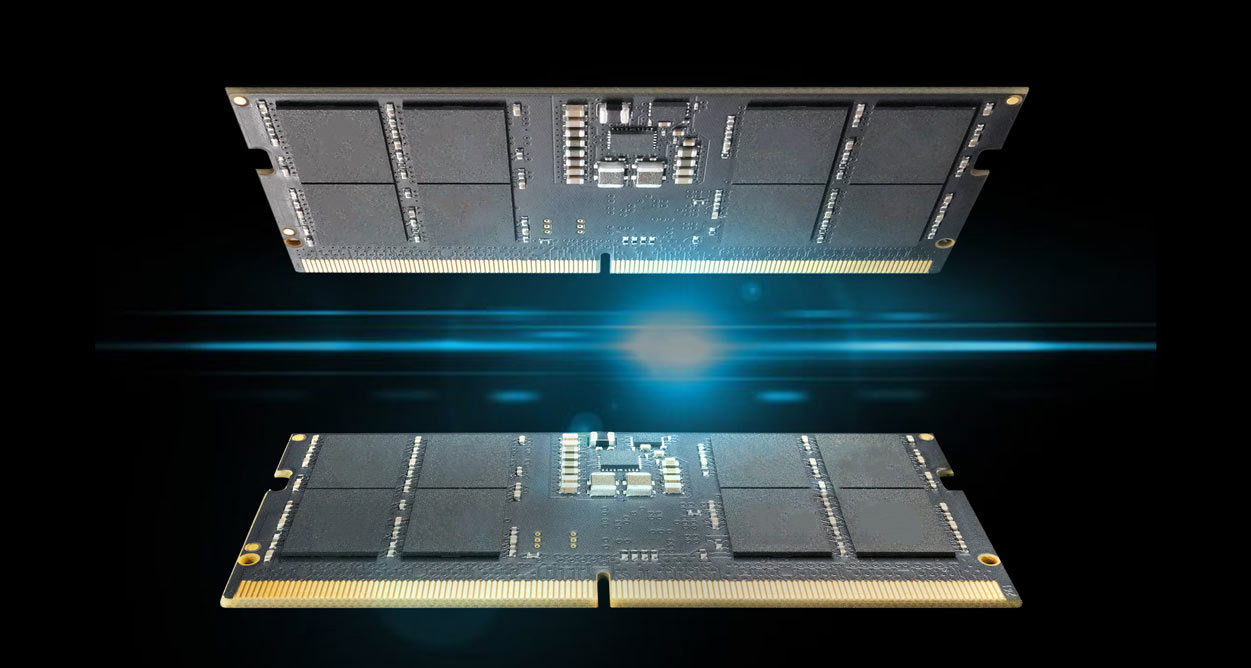DDR5 DESKTOP MEMORY
- DDR5 On-die ECC, Stable Performance
- Increased Fundamental Frequency, Faster Speeds
- Unleashed Capacity, Stronger Multitasking
- Improved Structural Composition, Greater Efficiency
- Reduced Working Voltage, Better Energy Efficiency
E-ink Screen
- Low power
- Easy installation
- Remotely updateable
- Indoor and outdoor applications
- Non-glare background
- High contrast
Frequently Asked Questions
When ECC memory is used on a motherboard that does not support ECC, the motherboard will theoretically turn off its ECC function and operate as non-ECC memory. However, if used on a less compatible motherboard, the motherboard may become unstable or unable to boot.
※ Note: For the ECC memory compatibility, we recommend you to refer to the motherboard specification.
A memory rank is a set of DRAM chips connected to the same chip select. The memory controller may perform read/write operation on the chips in 1 rank. The chips in 1 rank also shares the same control signals. For the current computers, 1 channel has a width of 64bit and can read/write 8 byte of data. For the memory controllers with ECC features and ECC memory modules, 1 channel has a width of 72 bit.
Rank can be determined by the memory controller and the specification of DRAM chips rather than the number of chips. Moreover, rank is not related to whether the memory module is single or dual in-line. Currently, most of the home PC memory controllers have channels with 64-bit width and their DRAM chips have a width of 8 bit. Thus, taking 8 DRAM chips in parallel can satisfy the demand of the memory controllers, 1 rank. However, there are some memory modules made with DRAM chips with 16-bit width. That is, 4 chips is 1 rank. (Please refer to the description below)
Rank: (defined by JEDEC)
A memory rank is simply a unique, independently addressable 64-bit data area of a memory module
Extreme Memory Profile (XMP) can enable overclocking feature of the compatible DDR3/DDR4 RAM to enhance the execution performance to above standard specification. To execute XMP, besides having RAM with overclocking feature, your motherboard should also support XMP in order to enable this function. Please refer to the user manual of your motherboard to set XMP.
ECC (Error correcting code): When an error was found in a storage device with ECC feature during data accessing procedure, the device will automatically detect and repair the error to keep the normal function of the system. This technology can increase data accuracy and safety.
The higher memory timings, the better. The lower the CAS latency (CL), the better. You can also get better performance by using the overclocking feature. Normal players may choose the RAM with higher memory timings while overclocking plays should take both memory timings and CL into consideration. The RAM with overclocking features is relatively expensive. Please refer to the post from Team Group for further explanation.
With the dual/quad-channel RAM feature, the motherboard connects two/four RAMs of the same capacity and specification in parallel in order to increase transfer speed. In this case, the motherboard should support the dual-/quad-channel feature and the RAMs should be installed on the designated slots in order to activate the dual-/quad-channel feature.
If you have the demand for dual-/quad-channel, we recommend you to buy the packaged dual-/quad-channel RAM from Team Group. These RAMs have been tested in pairs to ensure system stability and best performance.
If you would like to expand the capacity of RAMs alongside your existing RAM, we recommend you to directly upgrade to packaged dual-channel RAM. This is to avoid the incompatibility issues caused by mixed RAMs, which could result in unable to boot or crash, etc.



